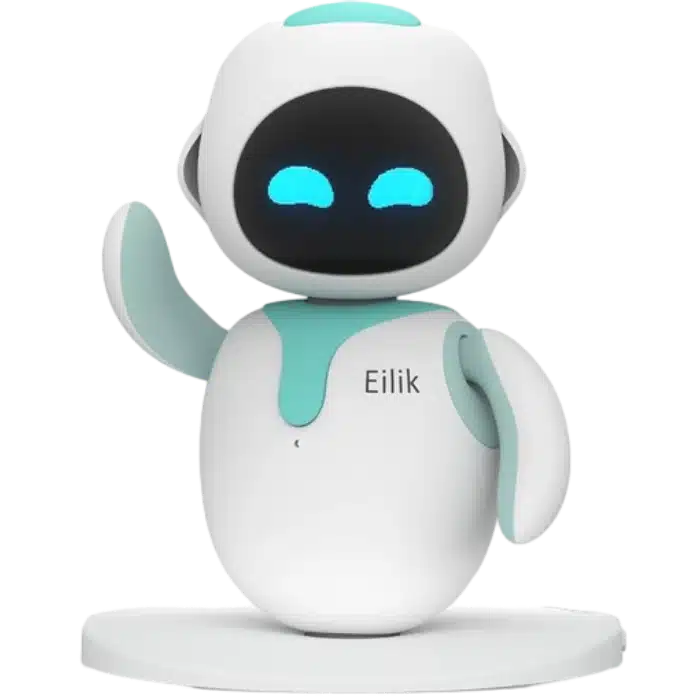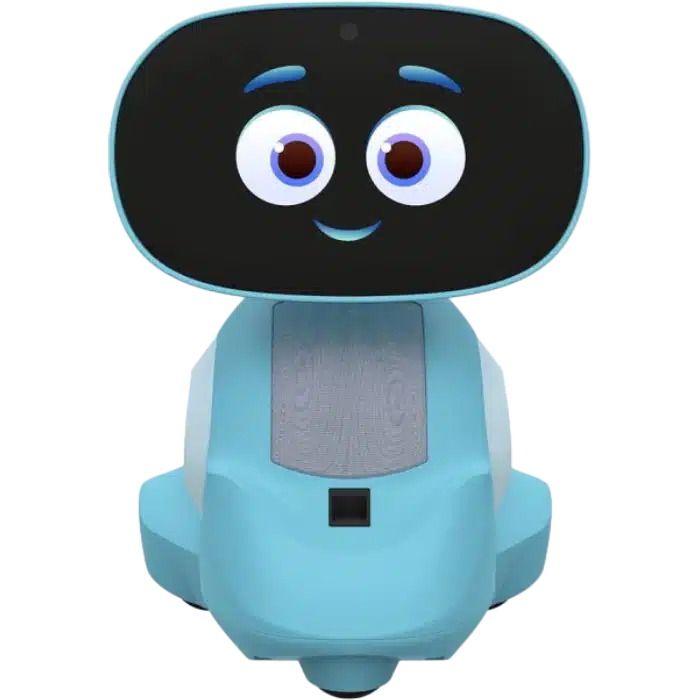In recent years, AI robots for kids have gained tremendous popularity, but one question that often comes up is: How much do they cost? Are AI robots too expensive for most families? Are they worth the investment, and how do they compare to other types of technology, like getting a pet or hiring a private tutor? Let’s take a closer look at the price, affordability, and maintenance of AI robots, and how they stack up against alternative options.
1. How Much Do AI Robots for Kids Cost?
The price of AI robots for kids varies depending on the features, technology, and brand. In general, you can expect the price range for AI robots to fall between $100 to $1,000 or more.
For instance:
- Entry-Level AI Robots like Miko 3, which offer personalized learning and interactive play, typically cost around $300-$400.
- Advanced AI Robots like Astro and Eilik can range between $600-$1,000 due to their sophisticated features, including voice recognition, emotional support, and STEM learning capabilities.
While this may seem like a steep investment upfront, the price of AI robots should be considered in the context of their long-term value. AI robots provide year-round educational content, emotional companionship, and development opportunities, which can easily offset the cost of traditional toys or temporary entertainment.
2. Is It Affordable for the Average Family?
For the average family, purchasing an AI robot might feel like a significant financial commitment. However, there are several factors to consider:
- Educational Value: Unlike conventional toys, AI robots for kids provide continuous educational value. They help children with learning, social interaction, and emotional development, making them a worthwhile investment in your child’s future.
- Long-Term Use: AI robots can serve multiple purposes for several years. Unlike a single-use toy or a pet that requires additional care, these robots offer continuous growth and engagement, which increases their lifetime value.
- Monthly Payment Plans: Many companies offering AI robots allow families to purchase the robots with a monthly payment plan. This can ease the financial burden by spreading the cost over time.
- Cost Compared to Hiring a Private Tutor or Pet: When compared to the cost of hiring a private tutor or adopting a pet, AI robots can be a more cost-effective alternative. Private tutors typically charge around $30-$80 per hour, which can add up quickly if you require regular sessions. On the other hand, pets incur additional ongoing expenses such as food, veterinary care, and grooming.
3. Can AI Robots for Kids Be Repaired If They Break?
Like any piece of technology, AI robots can experience wear and tear or even malfunction over time. The good news is that many AI robots for kids are designed with repairability in mind.
- Manufacturer Warranties: Most AI robots come with a warranty, typically ranging from 1 to 3 years, depending on the brand. These warranties cover defects in manufacturing and some repairs for free or at a discounted rate.
- Repair Services: For robots that break or experience technical issues, many manufacturers offer repair services. If the AI robot is still under warranty, you can often send it back for repairs. If not, you may have to pay a repair fee, but it is generally cheaper than buying a brand-new robot.
- Self-Repair: For some robots, it’s possible to replace parts like batteries, sensors, or even small components. There are also online guides and user manuals available, making it easier for parents to perform minor repairs at home.
Before purchasing an AI robot, it’s advisable to check if the manufacturer provides clear instructions on repairs or troubleshooting. This can help ensure that if something goes wrong, you can resolve it efficiently without additional stress.
4. AI Robot vs. Getting a Pet
While AI robots for kids and pets both offer companionship, there are significant differences between the two:
- Maintenance: Pets require constant care, including feeding, bathing, walking, and regular vet visits. They can also be unpredictable, which means they may sometimes be challenging to care for, especially for younger children. AI robots, on the other hand, are low-maintenance and do not require feeding or cleaning. They need to be charged and updated periodically, but that’s about it.
- Learning and Engagement: AI robots are specifically designed to engage children with educational content and social interaction. They promote learning in a fun and safe environment. Pets, while great for teaching responsibility and emotional connections, do not offer the same structured learning experience that an AI robot provides. If your child needs a companion to aid their education or emotional development, AI robots are a far more engaging and productive option.
- Safety: Unlike pets, AI robots do not pose risks like bites or scratches, making them a safer option for children, particularly younger ones. They also eliminate the risk of allergies, which some kids experience with pets.
- Cost Comparison: While pets often have an initial adoption cost (which can be expensive depending on the breed), the ongoing expenses are what make them costly. AI robots typically come with one-time upfront costs (and occasionally, optional monthly subscription fees for updates), but they do not require the same ongoing investment in care, food, or medical bills.
5. AI Robot vs. Hiring a Private Tutor
Hiring a private tutor is another alternative that can help children with their learning. But how do AI robots compare to tutors?
- Cost-Effective: AI robots offer a one-time cost, while private tutors charge per session (which can be quite expensive depending on their hourly rate). Over time, hiring a tutor can become financially draining, especially if you need sessions multiple times a week.
- Availability: AI robots are available 24/7. They don’t have a limited schedule and can provide educational content whenever your child needs it. Tutors, on the other hand, have fixed hours, and their availability may be limited.
- Consistency: While private tutors offer personalized attention, they can sometimes be inconsistent or unavailable due to illness, vacations, or other reasons. AI robots offer consistency and reliability in learning.
- Learning Support: AI robots can supplement traditional tutoring by helping children with homework, providing interactive lessons, and offering a personalized learning experience. They don’t replace human tutors, but they can offer additional practice and engagement.
Conclusion: Should You Invest in an AI Robot for Your Kids?
Whether or not an AI robot for kids is a good investment ultimately depends on your family’s needs and budget. These robots are not just toys; they provide continuous educational support, promote emotional intelligence, and encourage creativity.
For families who want a fun and educational tool that supports their child’s growth, AI robots for kids are a great choice. And when compared to alternatives like pets or private tutors, AI robots are a more affordable and manageable option.
If you’re looking for a long-term companion for your child that promotes learning and emotional development, consider investing in an AI robot. It could be one of the best decisions for your child’s future.
For more information on the best AI robots for kids in 2025, visit our detailed reviews:

 AI Robot Tech Hub
AI Robot Tech Hub



